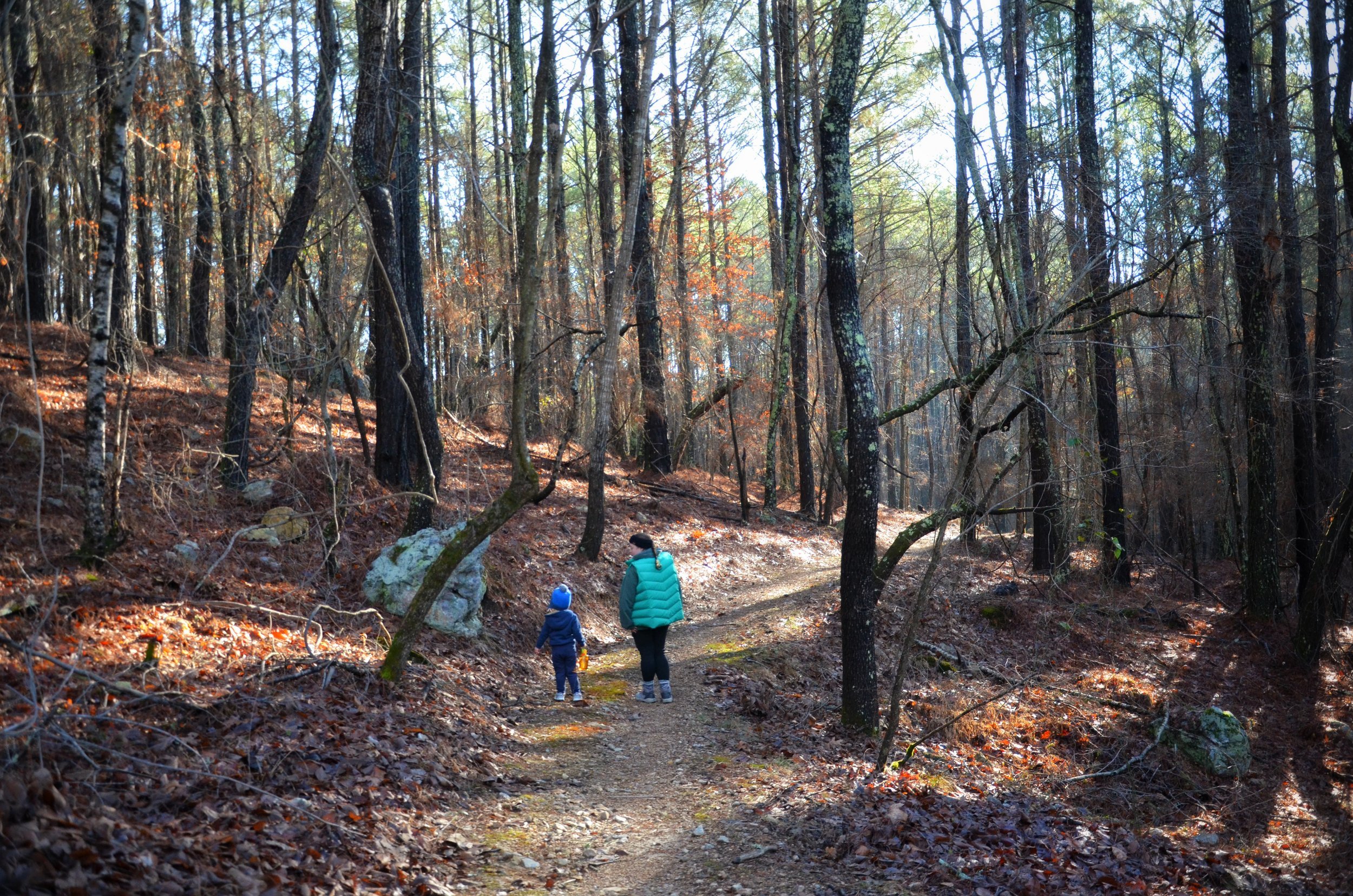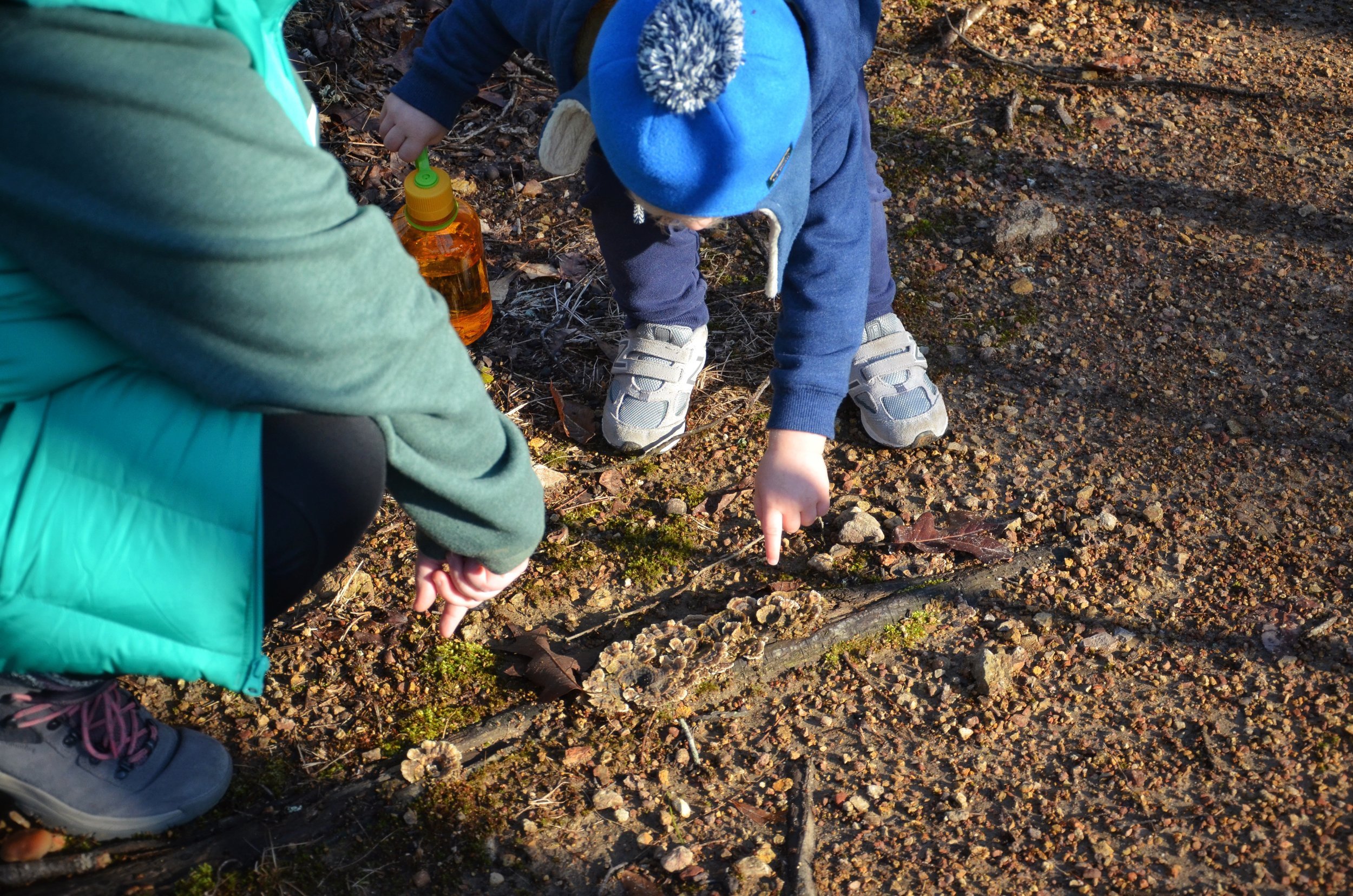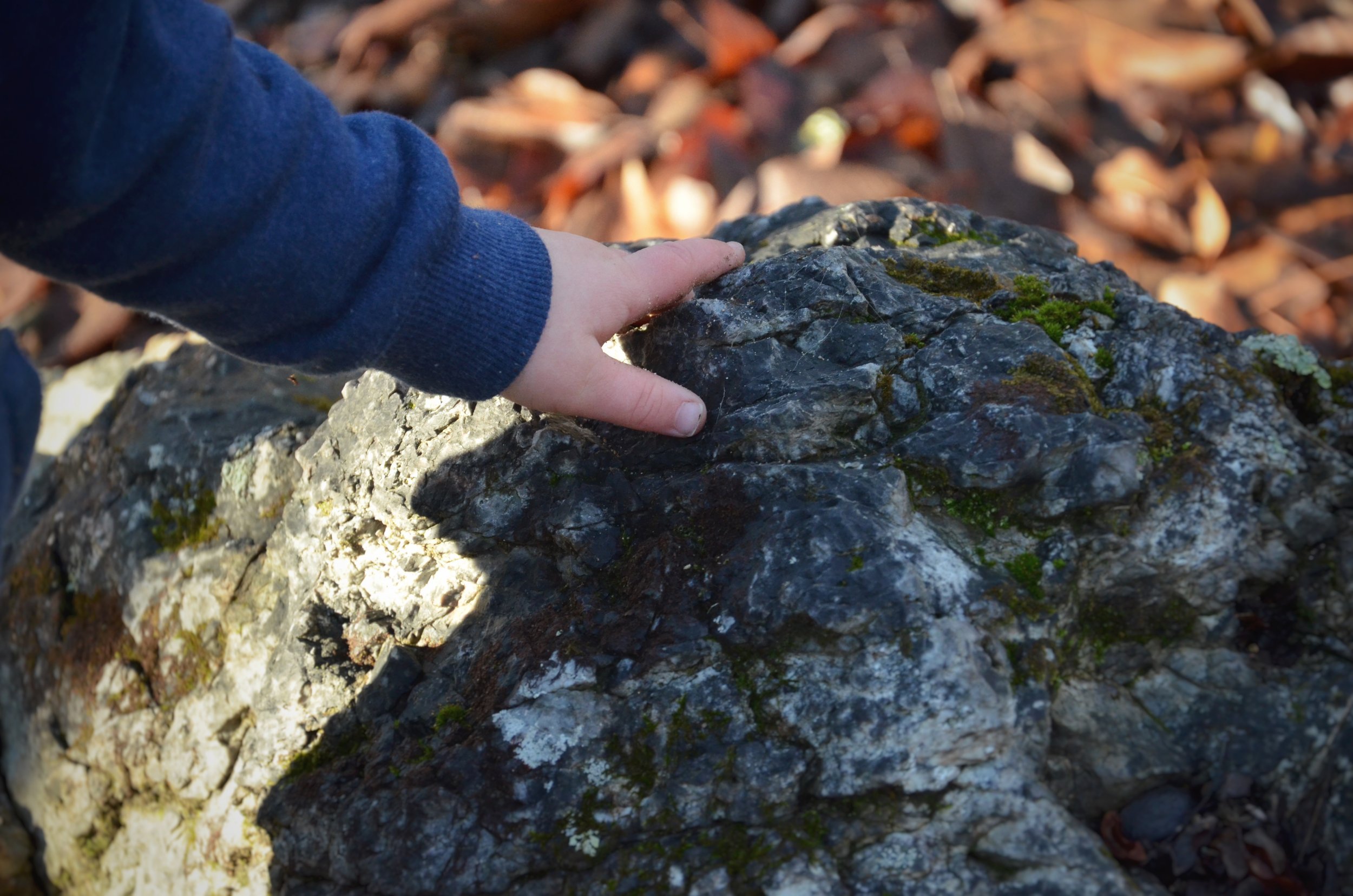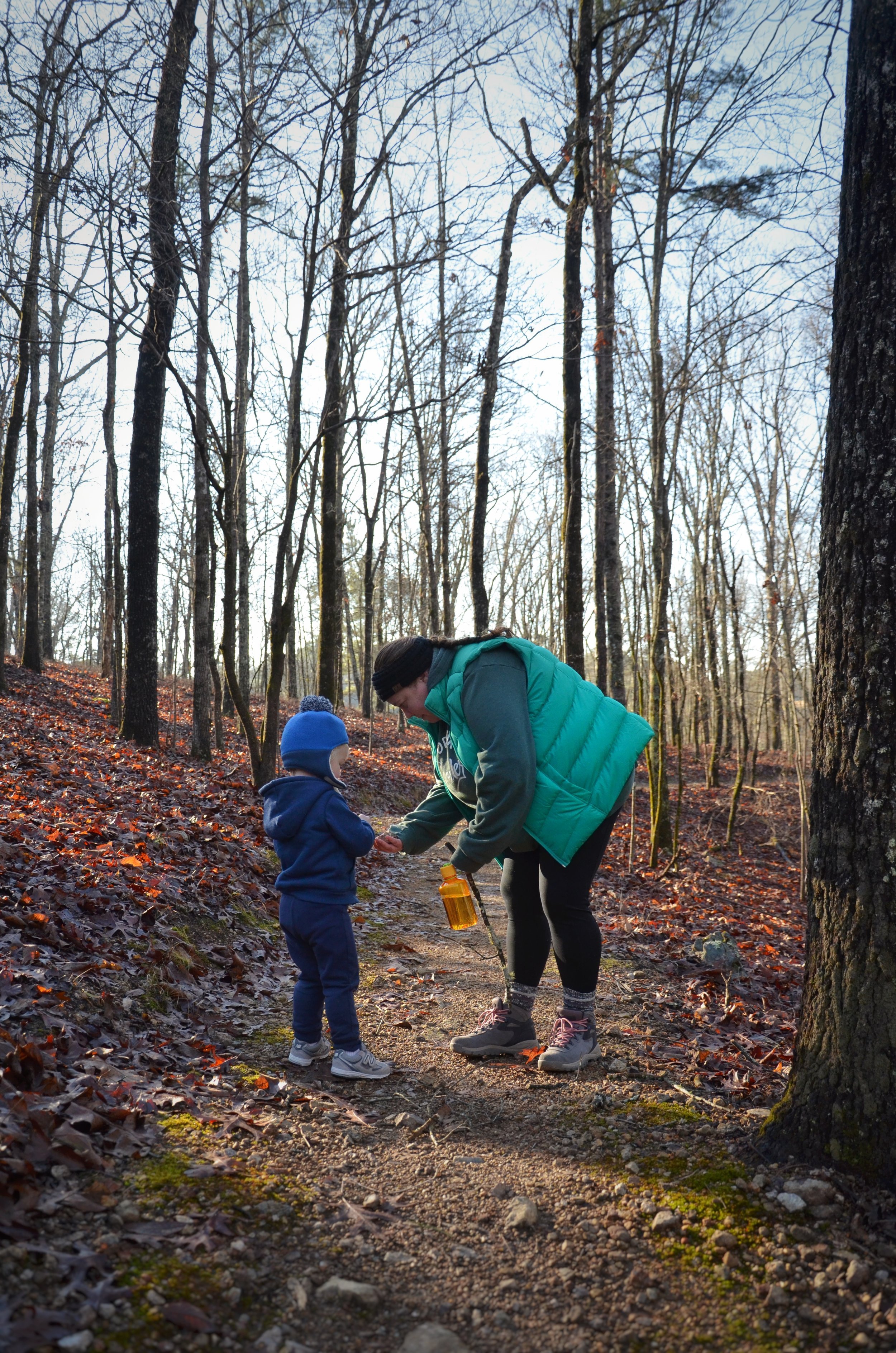A Journey of Hiking with Children and Re-Discovering The Joys of Nature Play
Last summer I started hiking with my two-year old son. I was feeling the call to get my feet back on the trail – something I did often in my early adult years in northern California, where I grew up – and the realities of parenthood meant, if it was going to happen, it would have to happen together. We set out on our first hike on a balmy Georgia July morning to tackle a trail loop about five miles from my house. 20 minutes into the hike I wondered, what on earth was I thinking bringing a two-year old on a hike!? We’d barely gone a quarter mile, we were drenched in sweat, and I’d spent nearly every second of the hike redirecting and trying to get him to focus on moving forward on the trail.
Long story short – or short hike long – we didn’t do the loop. We turned around and hiked back to the car. I sat in the AC feeling defeated. We hadn’t accomplished the hike.
A week later, determined to try again, we drove to a different hike near Carter’s Lake. Again, I went into the hike with adult expectations: we’re here to complete a hike. But on this particular day, as I sang summer camp songs to try to keep my son’s attention, something about his posture as he stopped to examine a rock as big as his head made me stop and examine my expectations. He first bent down at the waist, getting his face close to the rock to inspect it, before kicking it with his foot and then wrenching his hand out of mine to give it a smack. He circled it, looked up at me, laughed, and began to charge forward on the trail again – before stopping again to ask about a flower.
“This is what the hike is for, I thought to myself, not to complete it or check this activity off a list but to actually be right here on the trail.”
We’re now on our seventh month of hiking together. Some hikes are moderate and paved, others more complicated and wooded, and the lessons I’m learning from my son each time we set foot on the path are teaching me to awaken a wonder in nature I’d forgotten. The lessons are incredibly simple because they’re innate. Following his lead, awakening my own wonder, has been as easy as activating my senses whenever I’m on the trail, or anywhere outside – a city park, my own backyard, or at a campsite. The first step is to change my goals.
When the goals walking out the door into nature are too rigid, they distract from the senses. Thinking about how far we have to go or what we hope the experience will look like when we get there pulls presence out of the moment. Each time I lace my hiking boots now, even on solo hikes, I say to myself: my goal is simply to get out there and see what the trail has in store for me today. When I open the front door to hang out in my own yard or on my deck, I remind myself: my goal is to experience, even here, in the simplest of outdoor experiences. Then, I let my senses do the work.
I leave my phone behind when I can, and when I can’t for safety reasons, I place it deep in my backpack so I can’t grab it out of habit. I let the soundtrack be the rustle of the branches, the call of the birds, and the crunch of our shoes. I let my eyes take in the landscape, how it looks different from the last time I was here in the summer or fall. I let myself look for critters and plants I’ve never seen. I stop to touch the bark of a tree or pick up a stick or take off my shoes and let the soles of my feet remember what it’s like to grip grass, dirt, clay, and mud. I smell a leaf, a flower, my dirty hands. I taste how crisp water can be on a hot sunny day or how satisfying an apple is near the end of the trail.
This all takes time so my pace is slower, whether the pace is driven by my son or not. This activation of my senses is a kind of nature play. It’s play we’ve forgotten because it isn’t perceived as convenient or comfortable. It’s play we don’t do because it doesn’t make the best Instagram post or Tik Tok video. It’s play we’re afraid of because of what Richard Louv, in his book Last Child in the Woods, calls the “criminalization of nature.” But it’s play we need because this kind of play leads to wonder. This kind of play leads to awe. This kind of play heals a need to simply be.
Each time I leave the trail now I have a new curiosity: what kind of plant was that? I wonder why the roots grow this way? How close was I to a water source? I seek out information and take it with me on the next hike, deepening my knowledge of nature in the region. These are things I would have missed if I’d been concerned about finishing the trail, taking a picture, or being in constant motion. These are things I would have missed if I approached nature the way I approach a job, a goal in my planner, or a social media post.
These are things we can all do to awaken childhood wonder. The hardest part is getting out the door.
Something Alistair Humphreys, on Ginny Yurich’s 1000 Hours Outside podcast, calls the “front door mile.” If you’re hesitant, or maybe you’re not sure you remember how to let yourself play in nature, here’s my advice:
Release your expectations and goals – let yourself be.
Slow your pace – if you don’t go very far but you’ve been immersed, your journey matters.
Pay attention to and intentionally activate all your available senses.
Follow where your senses lead – if they nudge you to stop and touch (watch out for poison ivy and oak please!) or listen or smell then let them be your guide (if you’re not familiar with local flora and fauna bring your own taste items!).
Reflect on what piqued your curiosity, what you observed, what challenges you faced.
Over the last seven months hiking with my son, I realized I say a phrase to my son over and over, “pay attention to where your feet are.” I say it to him when he’s about to step on, in, or near something without being aware. One day, I heard myself say it and realized it’s the message we all need to hear when we’re in nature: pay attention to where your feet are. Pay attention to what’s around you, near you, under and above you.
So, the next time you step outside, for a hike or walk, to sit in the sun or stand under an umbrella, pay attention to where your feet are – then let your senses guide you from there.
Written by: Kathryn Wilhite of Re-creating Camp
Photography by: Lisa Frank







